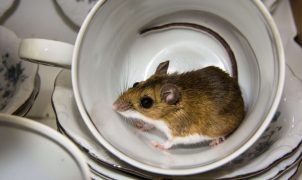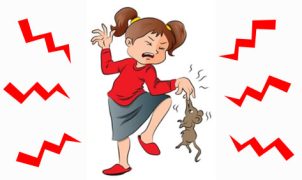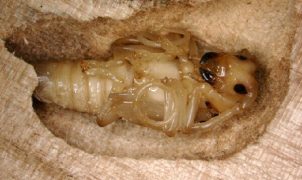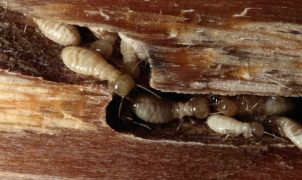Rove beetles are always a headache for everyone due to the danger they pose. Read the following article and pocket some simple tips to keep rove beetles out of your home.
Rove beetles have become a growing concern nowadays due to the danger and unpredictable consequences they bring. It is particularly challenging for households with small children to detect and treat them promptly.
Rove beetles do not actively attack humans, so if you cleverly know how to keep them out of your home or prevent them from flying in, you can live with peace of mind. Let’s go through some simple yet effective ways to repel rove beetles.
1. What are Rove Beetles?
Rove beetles, scientifically known as Paederus fuscipes or also referred to as pederid beetles, rove bugs, rice beetles, etc., are insects with black-yellow-orange alternating colors. They have a slender body, approximately 1-1.2 cm long, and 2-3 mm wide. They have 3 pairs of legs and 2 pairs of wings, with one pair of thin, translucent wings folded inside and one pair of short, hard wings. They fly and run very fast.
Rove beetles are attracted to light or night lamps, often landing on soft bedding, mattresses, and clothes.
Although rove beetles do not actively attack humans, when provoked or rubbed, they release a toxic substance that causes burns and skin inflammation.
Rove Beetle Nest
Rove beetles, also known as Nairobi flies, are common in areas with a humid climate. They often build nests in rice fields, tall grass, gardens, garbage dumps, and construction sites.

2. Rove Beetle Eggs
Rove beetle eggs are usually laid separately in cracks on the ground. Females lay about 18 – 100 eggs, starting in late April or mid-May to July.
After 3 – 19 days, the eggs hatch into larvae. The larval stage is divided into two phases, the first phase from the first 4 days to the 22nd day, and the second phase from the 7th day to the 36th day. The pupal stage lasts from 3 to 12 days. The total number of days to complete the life cycle is approximately 22 to 50 days, with an average of 32.5 days.
3. Harm of Rove Beetles to Humans
According to the Preventive Health Department, rove beetles contain Pederin toxin, which is highly toxic, about 12-15 times more toxic than cobra venom. However, due to small contact and only affecting the skin, it does not cause death like snake venom.
The toxin is transferred to humans through tiny bites, causing water blisters, itching, and, when scratched, the wounds may rupture, leading to skin inflammation.
In particular, Pederin quickly spreads when the patient crushes the beetle on the skin, causing the affected area to spread rapidly and extensively. Moreover, when this toxin comes into contact with the skin, it adheres and increases the level of damage.
If treated, it will be healed in about a week, but if the condition persists without treatment, it can cause long-lasting skin damage, leaving red scars for many months. If the toxin sticks to the eyes, it can cause conjunctivitis and swelling around the eyes, with temporary blindness in some cases.
4. Reasons for Rove Beetles Appearing Indoors
4.1. Weather Changes
During changing weather conditions, especially during the rainy season, rove beetles tend to enter homes. This is because it is a favorable time for many insect species to reproduce and search for food. Pay attention to rainy and stormy days; rove beetles may fly everywhere, including the kitchen, main doors, windows, etc.
4.2. Space and Hygiene Conditions of the House
Rove beetles often look for places to live and feed in areas with excess and messy food, especially in the kitchen. Since they tend to inhabit dirty and odorous places, they are attracted to your home if you do not maintain hygiene and cleanliness regularly.
5. Effective Methods to Eliminate Rove Beetles
5.1. Insecticide Spray
Insecticide spray can help repel rove beetles as the scent of the spray can keep them away. Spray the insecticide under the bed, shelves, and places where beetles may hide. Be sure to choose reputable insect repellent brands to avoid affecting your health!
5.2. Limiting Attractive Light
Rove beetles are attracted to the light of fluorescent lamps. Therefore, close the curtains to block the light from indoor lamps to avoid attracting rove beetles. You can also turn on outdoor lights on the balcony or in the yard to attract them outside.
During the night, close all doors to prevent beetles from flying in. If you have to work until late, use warm-colored lights to reduce attraction to rove beetles.
5.3. Plant Lemongrass or Use Lemongrass Essential Oil
Rove beetles dislike the scent of lemongrass, so placing a few small lemongrass pots near windows, corners of the house, and next to cabinet legs can keep them away.
You can also use lemongrass essential oil to diffuse in the house to repel rove beetles. Dilute the oil with water to spray on clothes, beddings, and use it to clean the floor, making your home a place that rove beetles find unpleasant.
5.4. Use Light Traps to Lure Rove Beetles Out
Since rove beetles are attracted to light, you can set up light traps outside the house to lure them away.
The process is straightforward: turn on the light in the hallway and place a transparent container filled with water underneath. The beetles will be attracted to the reflected light under the water and crawl towards it, falling into the water.
Additionally, a customer named V.H.Hiền shared that planting tomato plants in front of the house also helps prevent the invasion of rove beetles: “The neighbor’s house is infested with rove beetles, while my house, which planted tomato plants in front, is not affected.” This is also a useful tip that you can apply!
5.5. Plants that Repel Rove Beetles
Instead of using chemicals, you can plant these types of trees around your house to repel rove beetles: Calendula officinalis, Ocimum basilicum, Lavandula, Mentha, some species of Allium, etc.
5.6. Environmental Hygiene, Clearing Bushes and Trash
Cleaning and maintaining household hygiene is a routine task to keep a healthy living environment, preventing rove beetles from making nests. At the same time, it protects the aesthetics and space of your home.
5.7. Use Insect Screens
Insect screens are considered a highly effective solution to prevent insects, providing long-term efficacy and absolute safety. Therefore, this is an essential product to prevent rove beetles from entering your home.
5.8. Tips for Rove Beetle Control in Apartments
Rove beetles’ toxins are highly potent. When they come into contact with the eyes, they can cause conjunctivitis and swelling around the eyes, with temporary blindness in severe cases. Therefore, here are some tips to eliminate rove beetles in apartments:
- Spray insecticides directly on the beetle’s nest.
- Use mosquito nets to eliminate rove beetles.
- Insect repellent lamps help eliminate rove beetles thoroughly.
5.9. Some Preventive Measures for Rove Beetles
- When sleeping, use mosquito nets and wear long-sleeved clothes.
- Wash clothes, bedding, and curtains thoroughly before use.
- Regularly clean and maintain your living space.
6. Frequently Asked Questions about Rove Beetles
6.1. In which season do rove beetles appear?
During the rainy season, when humidity is high, is the favorable time for various insect species, including rove beetles, to reproduce and thrive.
6.2. Can rove beetle bites be contagious?
When bitten by rove beetles, the wounds are caused by the body’s serum, so there is no possibility of transmission to others.
6.3. Can you take a bath after being bitten by rove beetles?
You can still bathe normally after being bitten by rove beetles. Rinse the wound thoroughly with physiological saline water and then apply a medical ointment to the affected area to avoid swelling.
6.4. Do rove beetles have wings?
Rove beetles have a pair of hardened wings (elytra) and a second pair of wings folded underneath. However, they rarely fly and move very quickly.
6.5. Does a rove beetle bite hurt?
After being bitten by rove beetles, you will feel pain and a burning sensation at the bite site. If the damage is extensive, it can lead to fever, nerve pain, joint pain, and vomiting.
6.6. Does a rove beetle bite leave scars?
Rove beetle bites will not leave scars if treated properly. The bites will turn into water blisters, accompanied by a burning sensation and itching. In more severe cases, there may be oozing, and the wounds may take a long time to heal.
6.7. What are the symptoms of being bitten by rove beetles?
Symptoms of rove beetle bites include skin inflammation in exposed areas such as the face, neck, chest, shoulders, neck, and arms. The skin lesions are red, forming streaks along the direction of scratching, with a swollen background, small water or pus-filled blisters in the middle, and a slightly depressed yellow-brown area, circular or oval in shape.
Injuries will continue to appear if the affected person scratches the itchy areas, especially in the folds. For children, if the injuries are extensive, mild fever and nearby lymph nodes may occur.
7. How to Handle Rove Beetle Bites
If you accidentally come into contact with rove beetles and your skin turns red and itchy, immediately wash it with physiological saline water. Then use medical iodine to apply to the contacted skin area to prevent swelling.
If the contact area becomes more severe and pus appears, apply methylene blue solution to disinfect. This solution can be purchased at pharmacies.
Once the wound has dried and is no longer oozing, use antibiotic ointments with mild antibacterial and corticosteroid properties to apply, helping the wound heal quickly.
If the situation does not improve, be sure to see a doctor for a checkup to ensure safety. Never attempt to self-treat at home.
Remember to follow these guidelines to stay safe and free from the negative effects of rove beetles. Stay cautious, maintain a clean living environment, and enjoy a beetle-free home!
Cre: bachhoaxanh
























































































































































